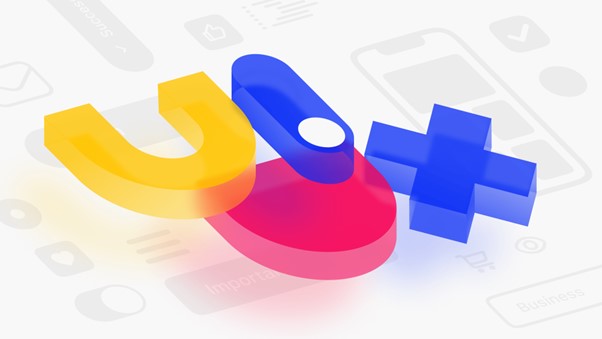
Have you ever used a website or app that was so frustrating to navigate that you just gave up and moved on to something else?
Great UI/UX design is essential because it can make or break a product’s success. A well-designed website or app not only looks good but it’s also easy to use and makes the user feel good about the experience. On the other hand, a poorly designed product can frustrate users, lead to negative reviews, and ultimately harm the reputation of the company behind it.
Why good UI/UX design companies matter
A professional agency like UI/UX design company Otakoyi can provide valuable insights and recommendations to businesses, helping them identify user needs and pain points and offering solutions to improve the overall user experience. UI designers of Otakoyi create an aesthetically attractive interface that not only attracts the user’s attention but also helps him quickly understand how to act correctly with the application.
The user experiences an interaction with the application or website. Otakoyi’s UX designers focus on making the interaction as simple and user-friendly as possible. They analyze user behavior to understand their needs and intentions and create an interface that meets their expectations.
That’s why Otakoyi helps companies create products that are not only beautiful but also simple and user-friendly. They understand that a satisfied user is a critical factor in the success of any product, and they make every effort to ensure the best possible experience for everyone who will practice it.
Importance of UX design principles
- The first principle of UX design is to focus on the needs and expectations of users. In order to create a product that is comfortable and easy to use, a designer must research and understand the needs and behaviors of their users. Only with this understanding can a designer create a product that satisfies user needs and provides ease of use. This principle helps to ensure that the product will meet the needs and expectations of users and will be used with pleasure.
- The second principle of UX design is the simplicity and comprehensibility of the product. This means the interface should be easy to understand and not create difficulties for the user. The main goal is for users to quickly and efficiently understand how to interact with the product. To achieve this goal, the designer must use simple and clear design elements that are easy to interpret for users. In addition, it is vital to ensure that information is properly organized and that users can find what they need without too much effort. Adherence to this principle helps to create a product that will be understandable and accessible to a wide range of users.
- The third principle of UX design means ensuring product consistency at all stages of user interaction. This means the product must have a uniform style and design that is understandable and easily interpreted by users. This helps to ensure that the interaction with the product is simple and understandable, as users will quickly get used to the style and interface and will be able to promptly find and perform the necessary actions. In addition, consistent design helps create a consistent experience for users across devices and platforms, which is essential to ensure the product’s ease of use and enjoyment.
- The fourth principle of UX design is to provide the user with complete control over the process of interaction with the product. This means that the user must be able to control all stages of interaction with the product and change settings, and cancel their actions at any time. For example, if a user is logged in, they should be able to log out at any time. This helps provide a sense of control and security for the user and allows them to interact with the product at their discretion.
- The fifth principle of UX design is about ensuring a good connection between the user and the product. This means that the product must be created taking into account the needs and expectations of users, as well as providing convenient and logical interaction. This can be achieved by using a clear and consistent interface that will help the user quickly navigate the product and efficiently perform the required actions. For this, various design elements such as colors, typography, icons, and other graphic elements can be used to help create a convenient and user-friendly interaction with the product.
Such an important role is played by UX design practices such as:
- Put yourself in the users’ shoes
Making a website or app with a good user experience requires understanding your users and keeping them front and center. What do they want from your product? How do they feel when interacting with it?
- Make it accessible
To create a really good website or app, you need to know exactly what users need. You have to think about how they will interact with the product and how it will all affect their feelings. Users should be at the center of attention throughout the process.
- Keep it consistent
Try to use simple words and talk about one thing clearly. Don’t switch to different topics that can confuse users. Simplicity is the key to success, so don’t overload users with too much information.
- Make a site map
Makes it easier for users to understand how to find information and navigate your site. Simply put, it’s like a map for your website that helps you navigate it.
- Use clear navigation tools
Simple words to describe the pages and sections of your site so users can easily understand where they are. Use clear and standard terms for navigation elements. Add a search function that lets users quickly find what they are looking for. It is also useful to have a list of sections that appear on each page so that users can easily navigate from one page to another.
- Keep your copy clear
Keep the text on your site clear and easy to understand. Use simple words and a concise style to make the text more accessible to your audience. It is not superfluous to use complex terms or to use an excessive number of words that can confuse users.
- Test and test
Testing your product for bugs and issues is an important part of creating a great user experience. Make sure you try the product on different devices and in different environments to identify any flaws that could reduce user satisfaction with your product. In addition, conducting tests will allow you to improve the product, making it more efficient and convenient for users.
- Design according to context
product or website design should be chosen according to the target audience and subject area. The design should emphasize the theme and functionality of the product and be pleasing to the eye.
- Keep it simple
The design should be clean and simple so as not to distract from the main content. Use easy-to-read fonts and font sizes. It is also worth avoiding excessive use of colors and providing sufficient contrast between the colors of the text and the background so that the text is readable. Remember to properly size and position elements on the page so that users can easily find what they need.
Wrapping up
In conclusion, UX and UI design play a critical role in creating digital products that are easy to use, accessible, and engaging for users. By following best practices such as conducting user research and testing, keeping it simple, and collaborating with team members, designers can invent products that are not only visually attractive but also practical in meeting the needs of the users. Good UX and UI design can enhance the overall user experience, build brand loyalty, and contribute to the success of the product and the business. This process can be further refined with the expertise of a branding design agency.

Taylor is a freelance SEO copywriter and blogger. His areas of expertise include technology, pop culture, and marketing.









